Newsday Prototype - player motivation
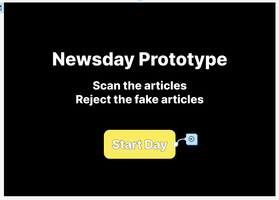

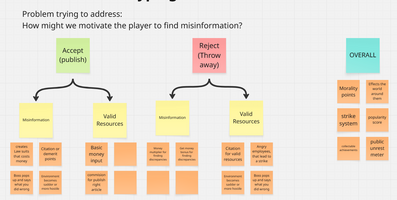
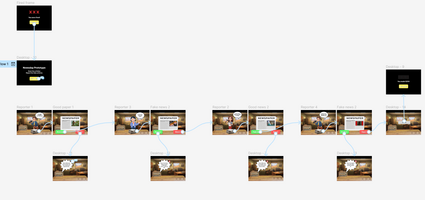

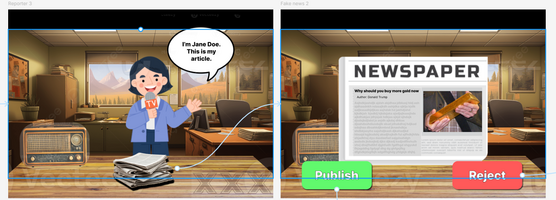
By Ryan McBride
Evaluating potential Problems
There were several areas that I was solid on yet, and I thought needed to expand upon. After looking at some of the more critical areas, and determined what needed more research and what needed to be investigated. I found that the current game loop did not take into consideration any form of punishment or reward system.
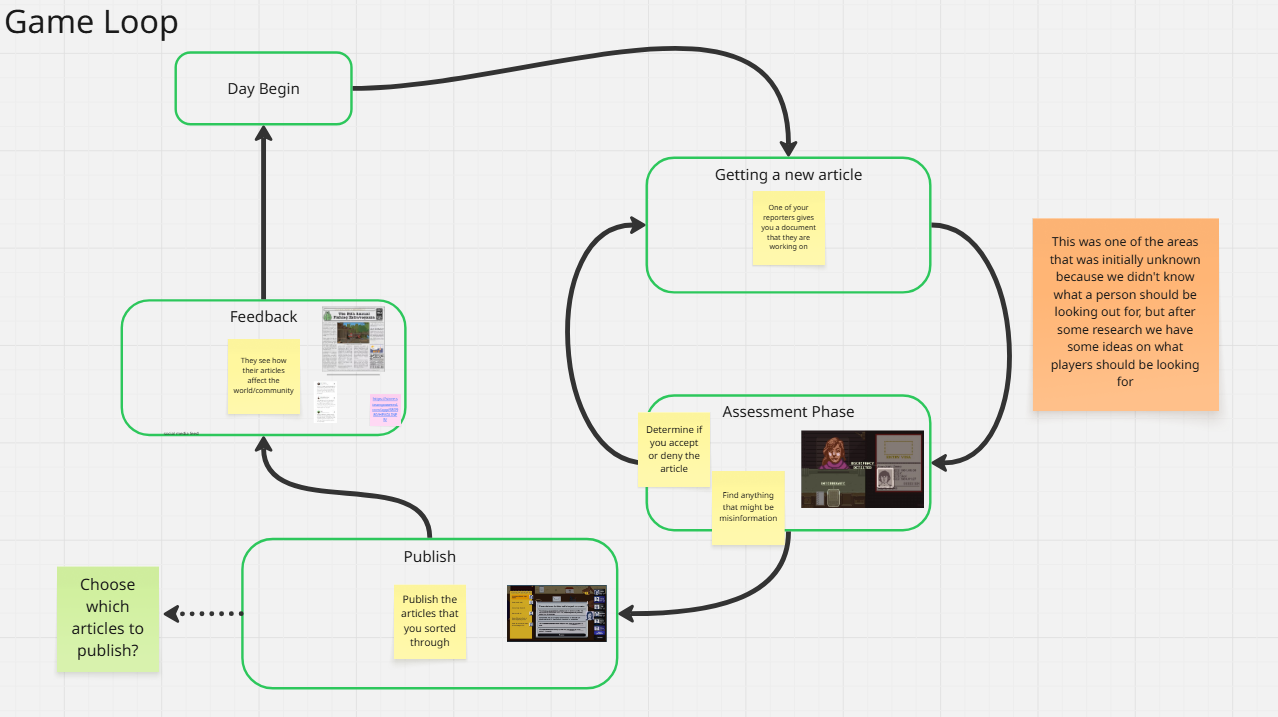
The player could tell that their actions had consequences in the real world, but beyond affecting the outside world, there was no motivation. There was no system set in place to punish or reward the player if they were taking the right actions. So, the players could do whatever they want, and they would go unpunished. Since this is a transformative game with the goal of teaching people how to recognize misinformation in articles, they should be notified when they make a mistake and be rewarded when they find a piece of misinformation.
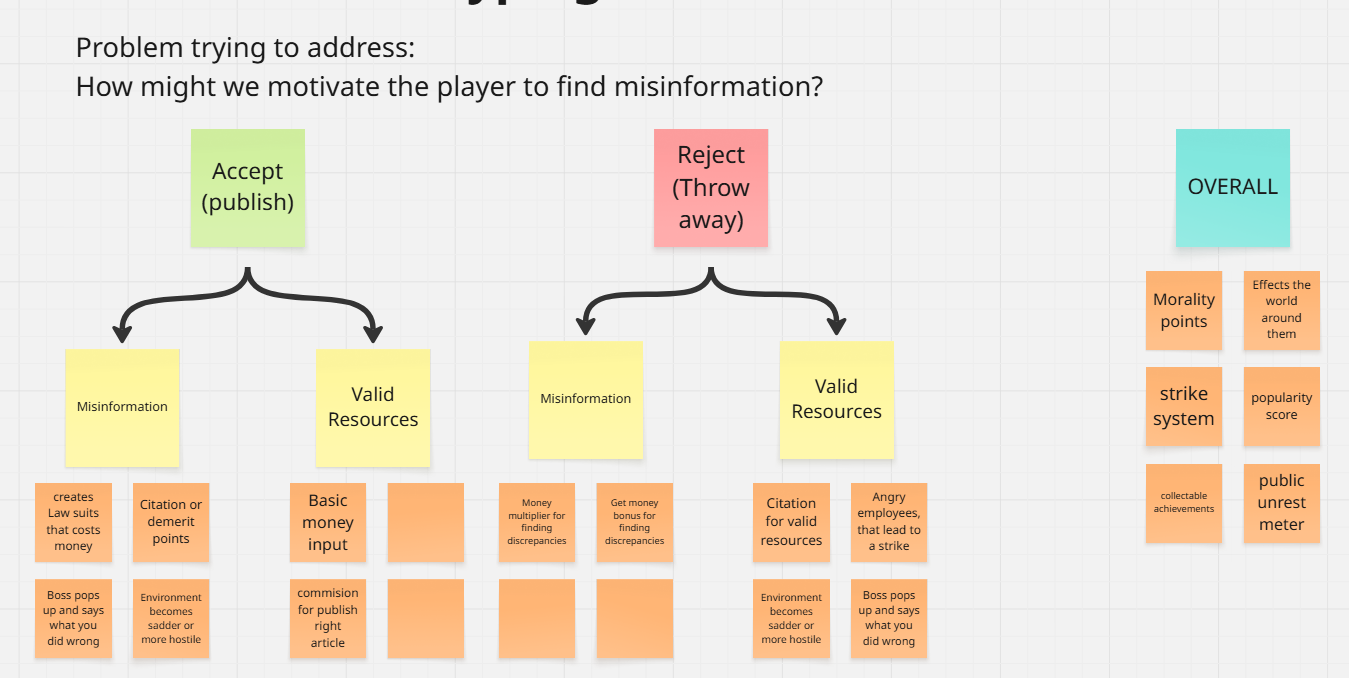
I started brainstorming several ideas on what I can do, either punish or reward the player based on their actions. So, for the most part, I decided to do a simple strike system, much similar to the one in Papers Please. After talking to some of my peers outside of the project, they highlighted a key detail that I should include, and that was to tell the player what they did wrong.
Building the prototype
I chose to make the prototype in Figma so that I could create a simple wireframe, and since this was purely reactive on several clicks, I did not need to go super heaving on the code just yet.
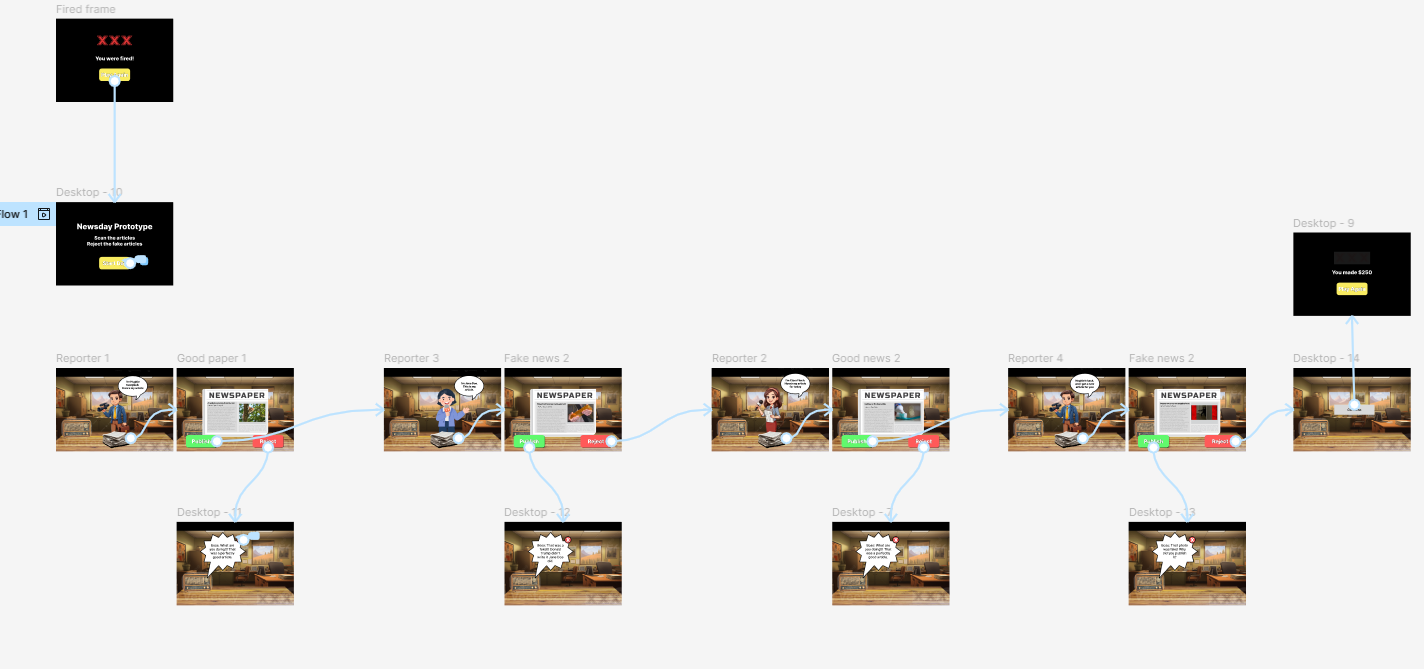
From this, I started to build a brief prototype with an oversimplified version of the main gameplay, where the player can just highlight over certain items to help determine if they were real or fake articles. So, as a temporary representation of the investigation, I made all the pieces of the article interactable. Where the player would just mouse over a certain part of the article to detect if it was real or not.
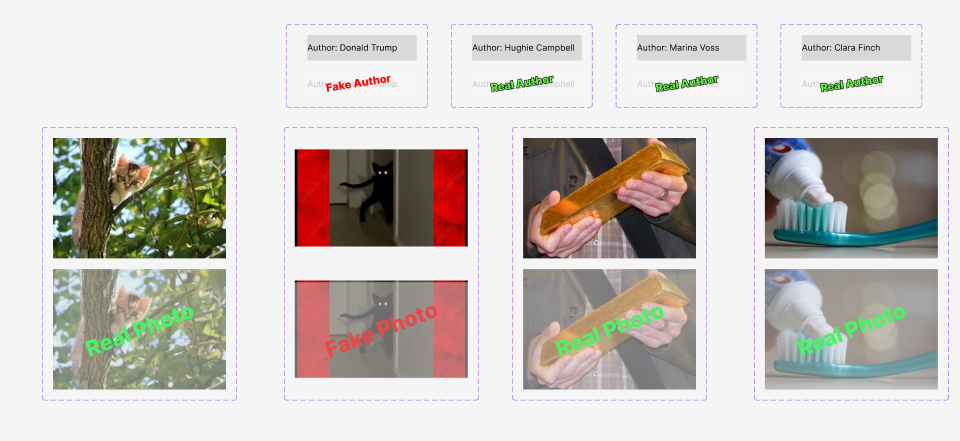
I chose to do it like this so that I can direct most of my focus on the punishment system. Showing the player any mistakes that they made while looking over the article. I did this by having a small section where your boss is yelling at you through a radio, to explain the mistake you made.
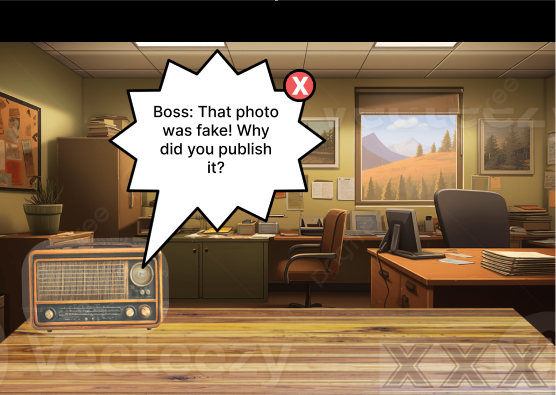
Testing the prototype
There were a couple of key things that I was looking for during testing:
- Did they know what they were doing during the game?
- Was the system effective in communicating what the player did wrong?
- Was the player able to keep track of how well they were doing?
The first question is one that I have in all of my questionnaires. It gives context on what the player is thinking and if they understand what their goal is in the game. If our players were confused about what they were doing in the game, then the answers in later questions would have a different meaning as opposed to if they knew what they were doing.
I did most of my testing through remote sessions, giving testers 2 links: one to the Figma prototype and another to a Google Form for players to fill out.
Final Results
After some testing, a small common theme popped up among some playtests, and that was that they don’t know how to search over the article by hovering over certain parts of the article. For some people, this would be a problem, but because the purpose of the prototype was about testing the failure system, experimenting with the players was okay. However, to help smooth things over, I should have clarified how you searched for the misinformation. Even though play testers were allowed multiple attempts with the game, it shows that they did learn between runs. For the sake of time, it might have been good to have a small blurb about how to search the articles.
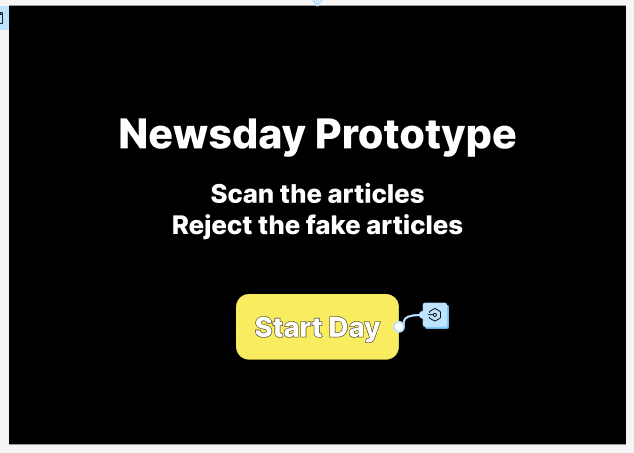
Even though the current instructions say for play testers to look over the article, it doesn’t mention that you find abnormalities by hovering over them. A simple fix might be changing the wording from scan to hover/mouse over.
Another thing that surprised me is that there was a reason why people got one of the articles wrong. It was the one where one of your reports posed as another person. Play testers were supposed to click reject, but chose to publish it.
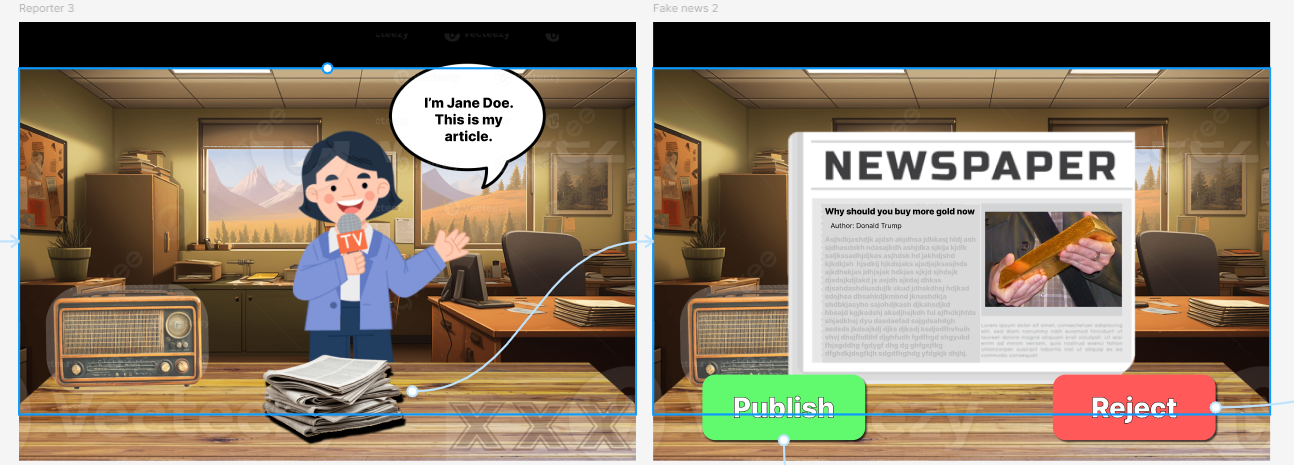
Their reasoning was that they believed it was an interview with someone or an article written by someone reputable. This is a perfect showcase of misinformation, where people would use names to spread false information. So, in the future, I think it would be very interesting to come back to this example in the final game, but also include joint articles, where other people commented on them.
From this prototype, players seem to respond well to the 2 types of feedback, from both the explanation as well as the strike system. Even though the strikes in the prototype were just a representation of the possibility, going forward, we will be making the strikes more dynamic so that the player can interact with them. Much like in Papers Please, as a physical document, or by interacting with a machine that displays the strikes that you have, similar to Buckshot Roulette.
Prototype:
For any of those interested in trying the prototype, here is a link to the Figma wireframe. When looking at the Figma link, set it to full screen, and change the options at the top right to “fill screen”.
Google Form questionnaire: https://forms.gle/wp2HxqAVogGy9M3b8
Get Design Practice 3 - Newsday
Design Practice 3 - Newsday
A transformative game, that teaches players on how to recognize misinformation.
| Status | Prototype |
| Author | JagerBigMan |
More posts
- Evan, Article Creation and Display Prototypeing In Engine6 days ago
- Johnson Prototyping7 days ago
Leave a comment
Log in with itch.io to leave a comment.